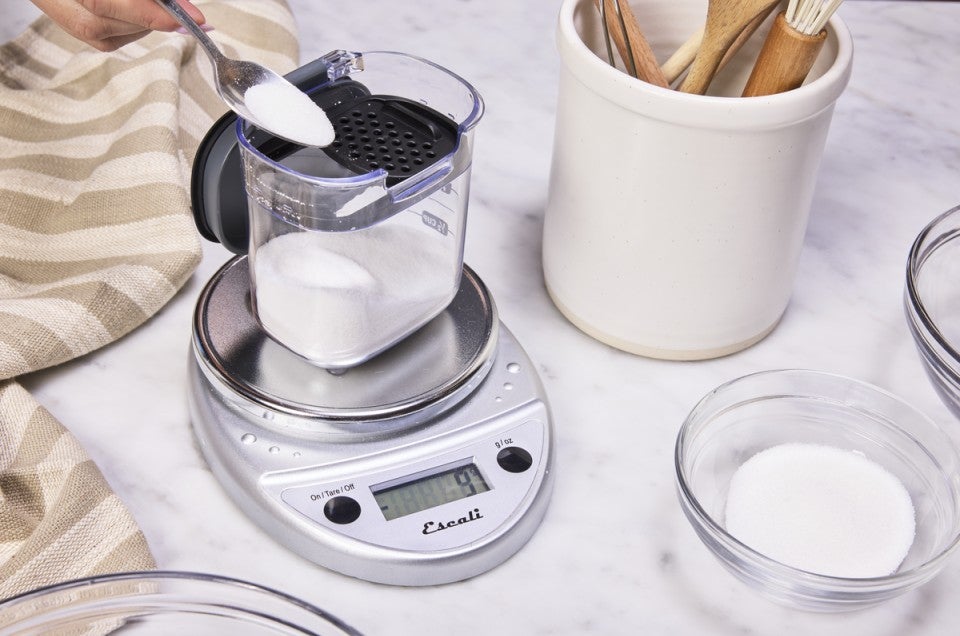


If you have a digital scale, you probably know the benefits it brings to your baking. With a scale, you can more accurately measure your ingredients and save on cleanup (no measuring cups and spoons required!).
But there's another, lesser-known way to use this handy tool, employing a method called reverse taring.
Here’s what that means: When you typically use a scale, you start by placing an empty bowl on the scale, taring to zero, then adding your ingredient, like flour, until it reaches the desired weight. But with reverse taring, you do things the opposite way: Start by taking a flour bag (or whatever ingredient you’re using still in its container, such as a bag of sugar, carton of milk, etc.) and put it on your scale, then tare it to zero. Now, you can scoop the ingredient directly from its container and into your mixing bowl, and as you do so, the scale will measure the amount you’ve removed in negative grams. Simply remove the desired amount until it reaches the weight called for in the recipe, shown as a negative value. (For instance, if your recipe calls for 100g of flour and you reverse tare, the scale will display –100g to show that you’ve removed 100g of flour from the bag.)
This method almost feels like a baker’s secret, though it has already made the rounds on TikTok with bakers who swear by it. And it isn’t just a novelty: It dirties fewer bowls and can save a bit of time (instead of measuring out every ingredient into a bowl or ramekin before adding to the mixing bowl).
@ana_calderone Bakers: Have you all been doing this and no one told me?? #fyp #bakingtips #bakinghack ♬ Paint - Trees and Lucy
There’s also a real practical benefit when you need to divide larger batches of ingredients evenly, like in layer cakes for cake batter, fillings, and soaks. This method can be used in something like Princess Cake, which requires multiple precise layers of cake soak, jam, and diplomat cream. You can reverse tare each of those ingredients directly from their bowl when building a layer cake to ensure evenness. Sure, you can eyeball it and hope for the best, but reverse taring gives you accuracy down to the gram. Recently, I’ve found it most useful when you need to equally divide a batter, like in the case of Italian Rainbow Cookies and coffee cake.

Reverse taring is also useful when you need to gradually add ingredients to a recipe. Whether you’re adding liquids to cake batter or sugar to meringue while the mixer is running, reverse taring allows you to directly measure from the ingredient container and keeps the process running smoothly.
Plus, reverse taring is useful for ingredients that include a range, like the amount of chocolate chips mixed into cookie batter or dried fruit added to granola. This way, you can start by adding the lesser amount, then decide if you want to continue adding more.
However you decide to reverse tare, the technique will certainly scale up your baking.
If you’re not baking with a scale yet, we highly recommend it for the very best baking. Our Essential Digital Scale is a great place to start.
Cover photo by Patrick Marinello; food styling by Kaitlin Wayne.


